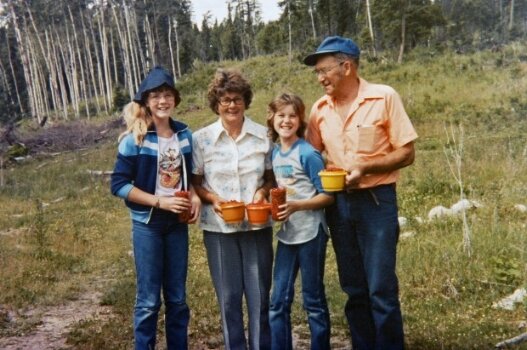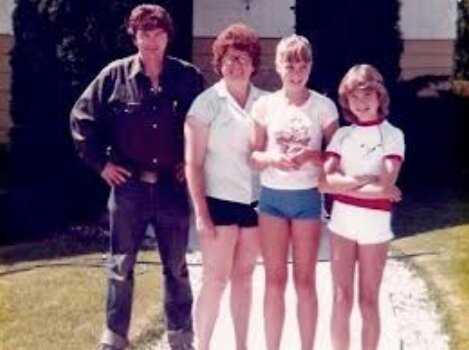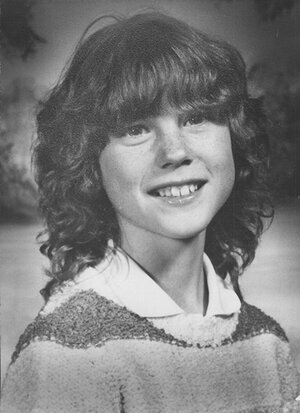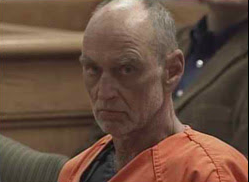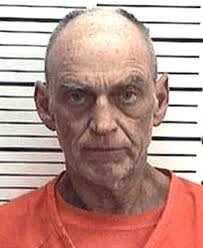The disturbing story of David Shearing and the Wells Gray Park camping murders
Updated November 2024
On August 2, 1982, Bob Johnson, 44, Jackie Johnson, 41, and their daughters Janet, 13, and Karen, 11, went on a two-week camping trip with Jackie's parents, George Bentley, 66, and Edith Bentley, 59. Sadly, it was the last family vacation they were ever to go on. The Johnsons and Bentleys were last heard from on August 6, 1982.
Their time near the beautiful Wells Gray Park was cut short by a sadistic, brutal killer obsessed with young girls. It is a sad and depressing story of outdoor adventure gone wrong, bad luck, and a mission by two Royal Canadian Mounted Police detectives to find the perpetrator of these awful crimes.
The media referred to the tragedy as the Wells Gray Park murders, but the actual site of the family’s massacre was just outside the park entrance.
The Johnson and Bentley Camping Trip August 1982
The group traveled to the remote Wells Gray Provincial Park, a wilderness park located in east-central British Columbia, Canada, around 300 miles (478 km) northeast of Vancouver. It covers 5,250 square kilometers (1.3 million acres) and is British Columbia's fourth-largest park after Tatshenshini, Spatsizi and Tweedsmuir. Before the arrival of Europeans, the Wells Gray area was a valued hunting ground for the Secwepemc (Shuswap), Tsilhqot'in (Chilcotin) and Canim Lake aboriginal groups.
The Johnsons pitched camp in a secluded area near the old Bear Creek prison site. Subsequently, the Bentleys arrived with their truck and camper van, which had a boat on top. The location was beside Fage Creek, 18 km (11.2 mi) north of Clearwater and 18 km (11.2 mi) south of the Wells Gray Park entrance on Clearwater Valley Road.
The disappearance of the Johnson and Bentley family
On August 16, 1982, Bob Johnson failed to return to work at Gorman Brothers Lumber in Westbank. This was very unusual for the 25-year employee. Fellow workers reported Bob missing to the RCMP on August 23, 1982.
Five weeks after the families were last heard from, on September 13, 1982, a mushroom picker reported finding a burned-out car with the driver's side door open in a clearing off a mountainside logging road. The logging road was near Battle Mountain Road, thirteen aerial miles from Bear Creek and north of Clearwater. The wreckage was similar to the car that the Johnsons were driving.
Police found a pile of burnt bones on the back seat, which were later identified as that of four adults and in the trunk were the remains of two girls. The charred remains were that of the Bentley and Johnson families. Forensic investigation of the bone fragments found that they had been shot with a .22 caliber gun. Because of the location of the vehicle in an accessible area, it was quickly assumed that a local was responsible for the murders.
Johnsons’ burnt out car discovered September 13, 1982
Locals had seen the family camped at Bear Creek, and the RCMP searched the area, finding six spent .22 caliber ammunition shells. Some beer caps of the brand known to be drunk by Bob Johnson were also found, as well as full bottles cooling in a nearby stream. Two sticks with sharp ends, probably used by the two girls to roast marshmallows, were also at the site.
However, the Bentleys' 1981 Ford truck and camper, camping gear, boat and motor, and other possessions were still missing.
Hunt for the killer
In April 1983, a television re-enactment of the killings was filmed on the site of the murders, which was then broadcast across Canada. Police hoped the re-enactment would spark someone’s memory, but despite being flooded with calls, no solid leads came of the effort.
Police created a replica of the Bentley 1981 Ford camper down to the last detail, including the aluminium boat strapped to the roof. In May 1983, they drove the trailer from British Columbia to Quebec, hoping someone would see it and remember something related to the case.
In advance of the camper’s arrival in each town or city, police held press conferences to publicize it. Over 1,300 alleged sightings were investigated, but all were false.
The RCMP posted a $7,500 reward, printed 10,000 posters and sent them to police detachments and post offices across North America.
Replica of the Bentley’ 1981 Ford camper used to publicise the missing vehicle
Some leads generated from all the publicity through investigators seriously off the scent. For example, two scruffy French-Canadian men were seen driving in a camper van east towards Quebec, but this was an unrelated vehicle. Many hours were wasted on these "wild goose" chases as the public phoned thousands of sightings, which all needed investigation.
Discovery of the Bentley Camper
But then, on October 18, 1983, fourteen months after the murders, with the trail running cold for the killer, Bentley's camper truck was finally found by two forestry workers near Bear Creek, on an old logging road near Trophy Mountain.
The spot was only 15 miles from the murder site and 20 miles from where the Johnsons' car was located and on a different side of the mountain. It had been burned using an accelerant, probably gasoline mixed with something else. The truck was well hidden, and it appeared that there had been an attempt to drive it into the gorge, but logs had blocked its path.
Bentley truck Bear Creek, Trophy Mountain
Police lifted the wreck with a helicopter and transported it to the RCMP Crime Lab in Vancouver. The burnt remnants provided no clues, but the location was of interest. The abandoned logging road on Trophy Mountain was not easy to access. A local said someone who knew the area was most likely involved as outsiders would have been unlikely to find the isolated spot.
The RCMP started questioning possible suspects again in Clearwater. They went door to door in the small community and questioned everyone in town a second time.
The arrest and interrogation of local man David William Shearing by the RCMP
David William Shearing, 24, who lived locally, was identified by someone who told police that, over a year earlier, Shearing had enquired about how to re-register a Ford pickup and repair a hole in its door. Shearing lived three miles from the site of the murders, and the police had never released the information about the bullet hole.
David William Shearing
On November 19, 1983, The RCMP found Shearing in Tumbler Ridge, north of Kamloops, where he was due to appear in court in a few days on a possession of stolen property charge of a significant amount of tools. He was taken into custody for questioning.
Despite his reputation and criminal record, Shearing came from a respectable family. His father, who has since died, had once been a prison guard, and his brother was a sheriff. Shearing graduated from high school and completed a heavy mechanic course.
Royal Canadian Mounted Police detectives Sergeant Mike Eastham and Constable Ken Liebel were initially convinced David Shearing was guilty and tried to gain his confidence. Eventually, they persuaded him to confess the crimes by getting him to relax and defer appointing a lawyer.
Coincidentally, David Shearing was one of the first individuals to have been interviewed by RCMP after the investigation started when the two families were discovered in the car. The interview took place in the backyard of the Shearing family farmhouse, around a mile from the murder scene. At the time of the interview, the murder weapon, Shearing’s .22 caliber rifle, hung on the wall of the family home. When police were questioned why they didn’t seize the firearm and test it to see if casings fired from it matched those found at the scene, Inspector Vic Edwards cited basic rights. “I don’t have any right to go into your house and examine your guns. The same as I didn’t have any right to go into Mr. Shearing’s house. We had no reason to suspect him.”
Initially, he was led to believe the arrest was related to a hit-and-run incident, which he quickly confessed to before the detectives confronted him with the Bennett-Johnson case. Shearing accidentally admitted to Eastham that he had heard the murders were committed at Bear Creek, which was not information that had been released to the public. After effort and persuasion, Eastham managed to convince Shearing to confess to the six murders, and he eventually agreed to re-enact the murders and even to turn over the murdered family’s possessions. Crucially, he handed the police a .22 caliber Remington pump-action rifle, which was forensically matched as the murder weapon.
Shearing initially stated in his confession that he shot the four adults as they sat around their campfire, then shot the girls as they slept in the tent, saying he only wanted to rob them. He told the RCMP that he loaded the bodies into their car, drove it by night to the mountainside, and set it on fire using five gallons of gasoline. He said he cleaned the campsite, then took the truck/camper back to his nearby property, only to burn it later when he discovered how difficult it was to re-register.
The RCMP also learned through Shearing’s closest friend, Ross Coburn, that he was with him when he ran over drunk lying on a Wells Gray Park road in 1980, killing him. The accident was never reported to the police.
The trial of David Shearing in 1984
On January 19, 1984, David Shearing waived his right to a preliminary hearing. His trial was initially scheduled to begin on March 5, 1984, but this date was postponed to April 16, 1984, after he waived his preliminary hearing.
The day Shearing’s trial was set to begin, he changed his mind and pled guilty to six counts of second-degree murder for the 1982 Johnson and Bentley families.
As part of the guilty plea, Shearing stated in a written statement:
“I walked out of the bush from behind the camper and started shooting. I put the bodies in the car, four in the back seat, and the two little ones in the trunk. I poured gasoline… it just went ‘Whoomph!’ I stood back and watched it burn. I went to the tent. I knelt down, and I shot the other two.”
The apparent confession was a complete fabrication, and due to the lack of evidence, the RCMP had little choice but to accept Shearing’s version of events at the time.
The Sentencing
Supreme Court Justice Harry McKay said, “What we have, very simply, is a cold-blooded and senseless execution of six defenseless and innocent victims for no apparent reason. The sentence I impose, in conjunction with such matters as protection of the public and specific deterrence, must have proper regard for public opinion and must express, in clear terms, the revulsion felt by the great majority of our citizens for this senseless and vicious mass killing. This case is at the upper range of culpability.
The victims were unknown to the prisoner. They did not, in any way, provoke him. He knew they were camped at the site and carefully scouted the situation. He went home and returned either that night or the next with a loaded .22 rifle. Why? We do not really know, but it seems it was to rob and kill.
There are no ameliorating or mitigating factors. The enormity of the crimes demanded the maximum sentence.”
On April 17, 1984, Justice McKay sentenced David William Shearing to six concurrent terms of life in prison with no chance of parole for 25 years. This was the maximum possible penalty for second-degree murder and the first time in Canadian history that it had been handed out. However, many were perplexed that the sentences were concurrent, giving him the chance to escape the prison system in later life. Shearing did not appeal his sentence.
David Shearing’s mother, Rose Shearing, expressed shock at the news of her son’s arrest and conviction for murdering six people.“I hope it’s a bad mistake or a bad dream. He’s always been such a good boy. He’s always worked hard, and he always saw that I had everything.” William Shearing, David’s father, died from cancer on March 19, 1982, about six months before the murders.
Greg Shearing, David’s brother, said, “I have a lot of questions I’d like to ask the police, too. I have a hard time believing all this, and I can’t say anything right now because it wouldn’t be fair to Dave.”
Mike Eastham interviews with Shearing to find the truth
Karen Johnson
Janet Johnson
Following Shearing’s conviction, RCMP Sergeant Mike Eastham re-interviewed him and got the disturbing truth behind the killings - pedophilia.
Eastham told Shearing, “You know why I’m here, David. I think you sexually abused those girls before you killed them. You told me some time ago that you would consider telling me the rest of the story after you were sentenced. Well, I’m here to collect, David, and I’m not taking no for an answer.”
David Shearing finally told Sgt. Eastham, what really happened. He lusted over the young girls and was determined to abuse them sexually, even if it meant killing the parents and grandparents.
RCMP Lead investigator Mike Eastham
Shearing said he saw the family when they set up camp and spent several days spying on them, with a fantasy to have sex with Janet and Karen. At dusk on August 10, 1982, he walked into the campsite with his rifle and shot Bob Johnson, then Jackie, and then George and Edith in cold blood.
The two girls were already in their tent, ready for bed. Shearing said he looked in and told them a dangerous biker gang was around, and their parents had run for help. While they stayed in the tent, he said, he loaded the bodies of their parents and grandparents into the back seat of the family car and covered the bodies with a blanket. Then he crawled into the tent with the girls.
Shearing told Eastham he kept the girls alive for nearly a week, staying with them both at his ranch and at a small fishing cabin on the Clearwater River whilst repeatedly raping them.
They left the cabin after they were nearly discovered. A prison guard was supervising prisoners from a local jail who were fishing on the river. He came to the cabin door to tell Shearing not to be alarmed. But Shearing hid the girls behind the door and told them to stay quiet. The guard noticed nothing unusual.
Shearing moved the girls to his family farm the next day, and then, on August 16, 1982, he walked Karen, the younger daughter, into the woods and killed her. He repeated the process with Janet, the older daughter, on August 17, 1982. He told the girls to turn around so he could urinate, then shot each sister in the back of the head. He took the bodies back to the Johnson family car, which he’d hidden and put the girl’s bodies in the trunk. He drove the car to a secluded spot and burnt it.
To double-check the story, Eastham found the prison guard. He remembered the meeting precisely as Shearing had described it. Then, RCMP Constable Ken Leibel hiked through the bush to the fishing cabin. Shearing told Leibel he carved his initials on the wall there. Leibel found them next to a second set, JJ, for 13-year-old Janet Johnson.
Constable Leibel said in an interview 25 years after the murders, “That’s how close everyone was to them. But for a cruel act of fate, those two precious little girls would be alive today.”
Eastham later wrote a book with Ian McLeod called “The Seventh Shadow, in which the author goes into great detail about all aspects of the case.
Aftermath and Parole hearings
Shearing now goes by his mother's maiden name, Ennis. In September 2008, David Shearing was up for parole - 24 years after his conviction for the murders. The National Parole Board ruled that he still had violent sexual fantasies and hadn't completed sex offender treatment. Hence, he was not ready for freedom. His second application, in 2012, was also rejected when a petition with 13,258 signatures was presented to the National Parole Board. Shearing applied again in 2014 and withdrew the request a month before the hearing. In the meantime, online and paper petitions got 15,258 signatures urging the parole board not to release him.
In 1995, he married a woman from Prince Albert, Saskatchewan. Heather Ennis claims her husband deserves a second chance, “I have seen so much change in this man since we met (in 1993). I know the man’s heart is in the right place, and I’m just here to back him up.”
David Shearing, or David Ennis, remains in prison at Bowden Institution, south of Red Deer, Alberta, now 65 years of age.
Exclusive articles for members of StrangeOutdoors that are not available elsewhere on the site.
See the latest list of Exclusive members-only articles on StrangeOutdoors.com
Read more True Crime Stories from StrangeOutdoors
Sources
https://en.wikipedia.org/wiki/Wells_Gray_Provincial_Park
https://en.wikipedia.org/wiki/Wells_Gray_Provincial_Park_Family_Murders
http://dyingwords.net/david-shearing-the-monster-from-wells-gray-park/#sthash.hUyyi6wR.PxXToWpg.dpbs
http://murderpedia.org/male.S/s/shearing-david.htm
https://www.lelandhale.com/wordpress/startling-development-british-columbia/
https://christopherdiarmani.com/14874/crime/canadian-mass-murders/david-william-shearing-slaughtered-family-of-six-in-wells-gray-provincial-park/
Further reading and viewing
The Seventh Shadow: The Wilderness Manhunt for a Brutal Mass Murderer by Michael Eastham and Ian McLeod (1999, Paperback)
The Wells Gray Gunman https://www.youtube.com/watch?v=unFwrrYLZH8
The Detectives The Wells Gray Gunman S1 E1 (Canada only)https://watch.cbc.ca/the-detectives/season-1/episode-1/38e815a-00d94f07a15



